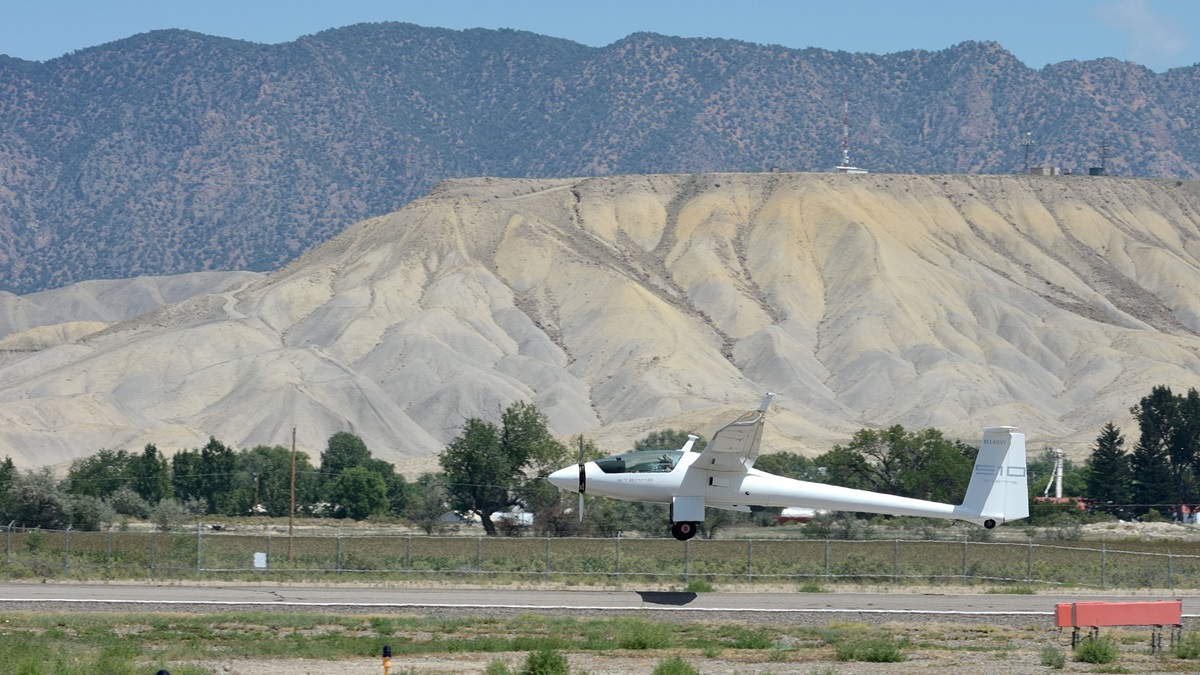Sun dims, thermals fizzle
Pilots gathered in Montrose, Colorado, for a weeklong Soarfari, and a pair of Stemme motorgliders headed northeast from Montrose Regional Airport to view the partial eclipse in flight.
The objective was Rifle Garfield County Airport in Rifle, Colorado, where 90 percent totality was expected; Montrose would have only 85 percent coverage.
“I was surprised there wasn’t more difference in the amount of light available,” said Wes Chumley, a Stemme demonstration pilot flying an S-12. “The light just sort of changed color.” Soaring back toward Montrose, however, he found absolutely no thermals. Neither did other pilots up at the time. They concluded that the reduced solar heating delayed their formation. Indeed, people on the ground at the Montrose airport said they believed temperatures dropped as much as 20 degrees at the time of maximum solar coverage.
“It didn’t get nearly as dark as I thought it would,” said Lea Mattson of Boulder, Colorado, who viewed the eclipse from a Stemme S-10. “It was more amber colored. More than the color, I noticed the temperature difference. It felt noticeably cooler.”
“I thought it was going to get to more of a twilight, but it was like a late evening,” said Jerry Hain of Tucson, Arizona, another Stemme demonstration pilot flying with Mattson. “But the coloration was interesting.”
Both Hain and Mattson said that for the next solar eclipse, they will fly closer to totality.









